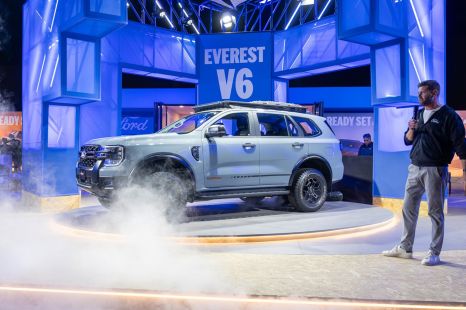

Damion Smy
Ford Everest Tremor gets 260kW V6 ‘Ranger Raptor’ treatment
14 Hours Ago
It's a hefty unit with a hefty price tag, but the Hyundai Palisade is a solid choice if you look past the annoying safety tech.
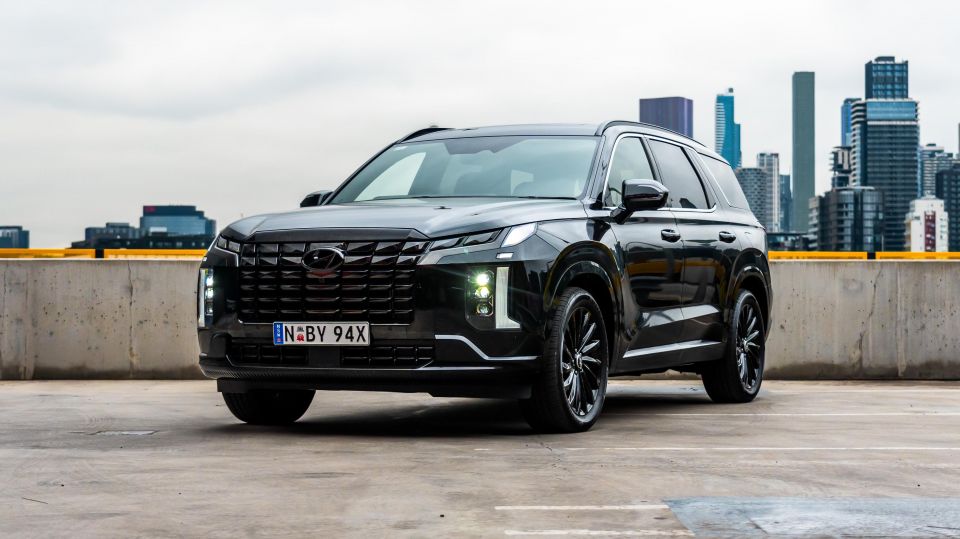
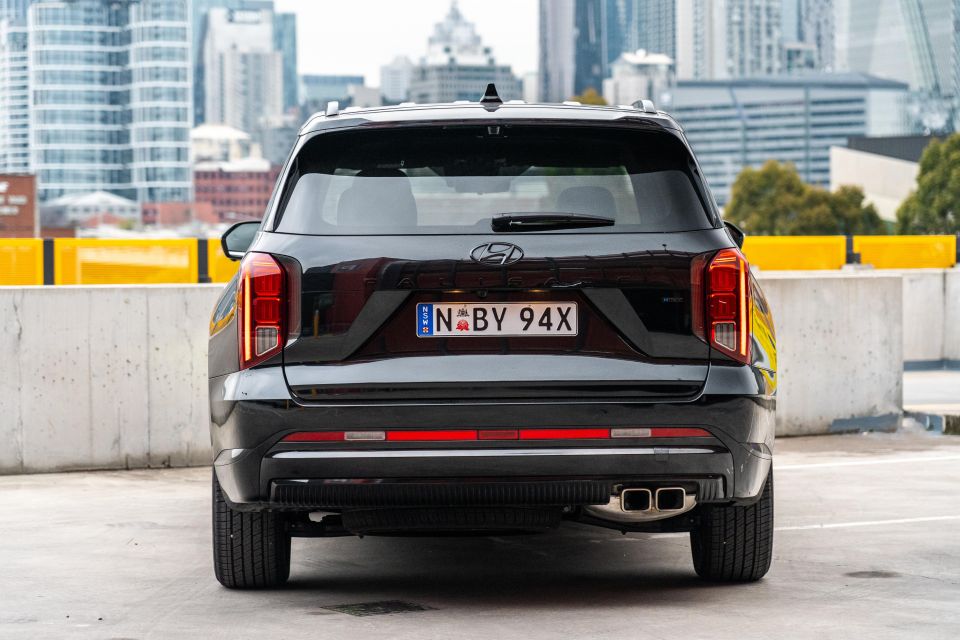

Quickly see how this car stacks up against its competition. Select any benchmark to see more details.
Where expert car reviews meet expert car buying – CarExpert gives you trusted advice, personalised service and real savings on your next new car.
Hyundai’s flagship SUV is a formidable beast.

The Palisade received new features and a revised model range for the 2024 model year, but it’s still the same large SUV it was before.
It’s large, imposing, and holds a commanding presence on the road, which is everything you’d want from a family hauler. Hyundai offers a seven-seat layout with captain’s chairs in the second row, while an eight-seat version is also available with two three-seat benches in the back.
There are also two engines available – a petrol and a diesel. That means there’s plenty of choice across the range, but the question is how much you’d be willing to spend for a big ol’ Hyundai.
On test here is the 2024 Hyundai Palisade Calligraphy Black Ink Diesel AWD, which is the most expensive Palisade money can buy right now. The Calligraphy nameplate was adopted this year, and the Black Ink version is the most kitted-out model.
It’s got an all-black exterior aside from some chrome trim on the sides and back, which means it gives the stealthy impression of something a professional bodyguard would drive around in.
Does it live up to that impression, or is it worth saving your money on a cheaper version? There’s strong competition from the likes of the Kia Sorento, Nissan Pathfinder and Toyota Kluger; so there’s plenty to fight for.
The Calligraphy Black Ink sits at the very top of the Palisade range – it’ll ring up $80,900 before on-road costs.
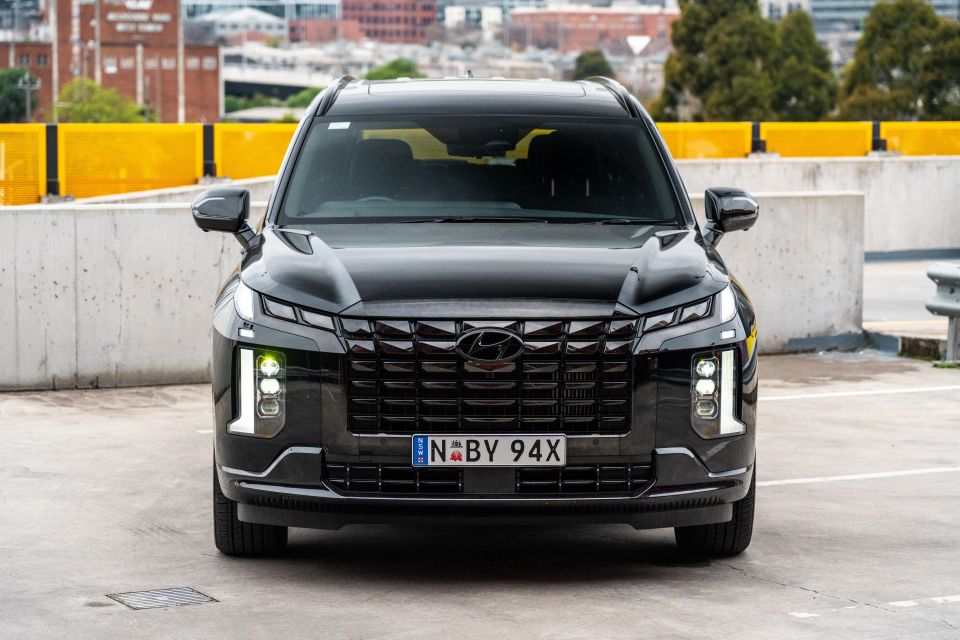
That’s around $15,000 more than the range-opening Elite, and $10,100 more than the cheapest Palisade with a diesel engine.
| Model | Price before on-roads |
|---|---|
| 2024 Hyundai Palisade Elite FWD V6 | $66,800 |
| 2024 Hyundai Palisade Elite AWD diesel | $70,800 |
| 2024 Hyundai Palisade Calligraphy FWD V6 | $75,900 |
| 2024 Hyundai Palisade Calligraphy Black Ink FWD V6 | $76,900 |
| 2024 Hyundai Palisade Calligraphy AWD diesel | $79,900 |
| 2024 Hyundai Palisade Calligraphy Black Ink AWD diesel | $80,900 |
Although we tested a 2024 example, prices for the Palisade’s Black Ink variants have increased for 2025. That means the most current version of our tester is now $1731 more expensive.
There are no specification changes, and all other variants have remained the same.
| Model | Price before on-roads |
|---|---|
| 2025 Hyundai Palisade Elite FWD V6 | $66,800 |
| 2025 Hyundai Palisade Elite AWD diesel | $70,800 |
| 2025 Hyundai Palisade Calligraphy FWD V6 | $75,900 |
| 2025 Hyundai Palisade Calligraphy Black Ink FWD V6 | $78,400 (+$1500) |
| 2025 Hyundai Palisade Calligraphy AWD diesel | $79,219 |
| 2025 Hyundai Palisade Calligraphy Black Ink AWD diesel | $81,719 (+$1731) |
To see how the Hyundai Palisade lines up against the competition, check out our comparison tool.
Buy your new car without the stress. It's fast, simple and completely free.

Great service from Travis and team, second time I have used this business would not hesitate to recommend them to anyone
Craig C.
Purchased a Ford Ranger in Sunshine Coast, QLD
CarExpert helped Craig save thousands on his Ford Ranger, now let us save you on your next new car.
Find a dealUpon stepping inside, there’s no doubt this is a genuine luxury offering.
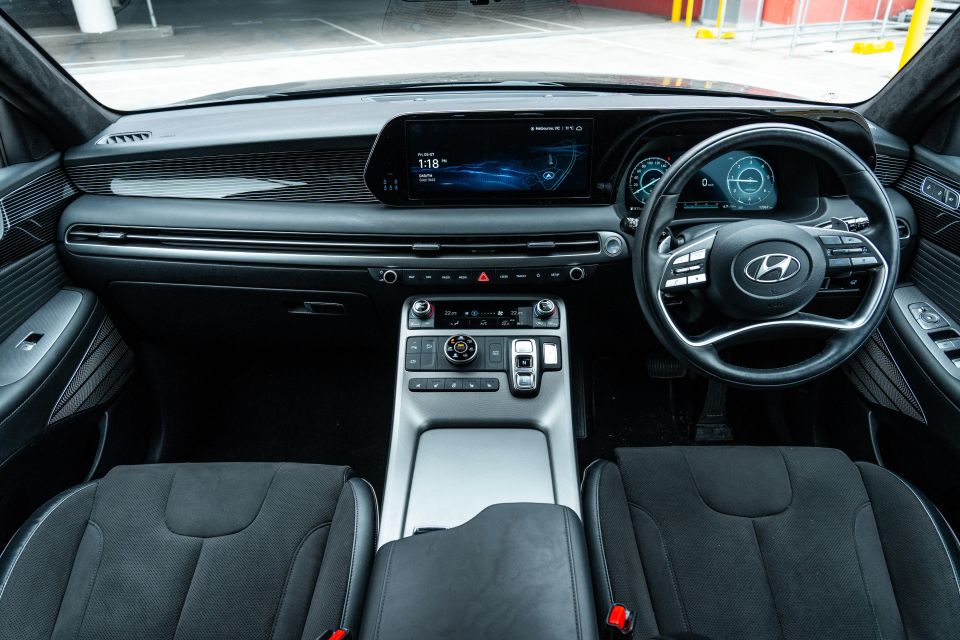
The first thing you’ll notice is the sheer amount of space you get up front. There’s a massive centre console separating you and your passenger, yet it doesn’t feel like it’s taking up any more space than it should.
It’s finished with a textured silver plastic, which is a constant design element throughout the cabin. Silver accents are featured on the door’s metal speaker covers, steering wheel, and air vents, as well as the pinstripe on the glossy sections of the dashboard.
Overall it’s a classy design, and it’s made by better by the fact none of the key touch points are finished with horrible gloss black panelling. Everything in here is durable and won’t show significant signs of use, even as the odometer reading begins to climb.
As for the rest of the interior, the design flows naturally across all spaces with its non-aggressive shapes and curves. It’s all very deliberate, and it helps that Hyundai has used quality materials throughout.
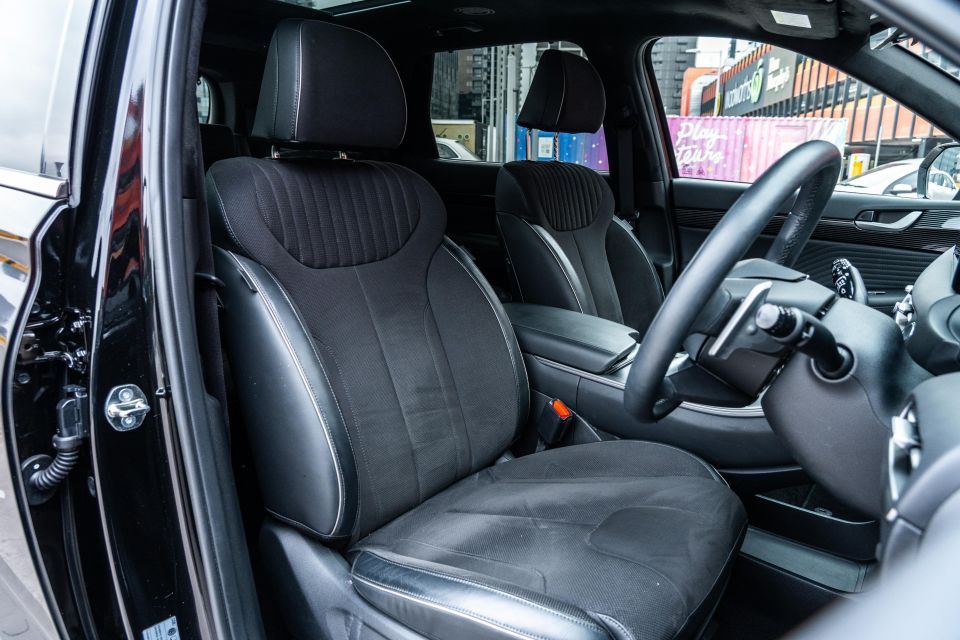
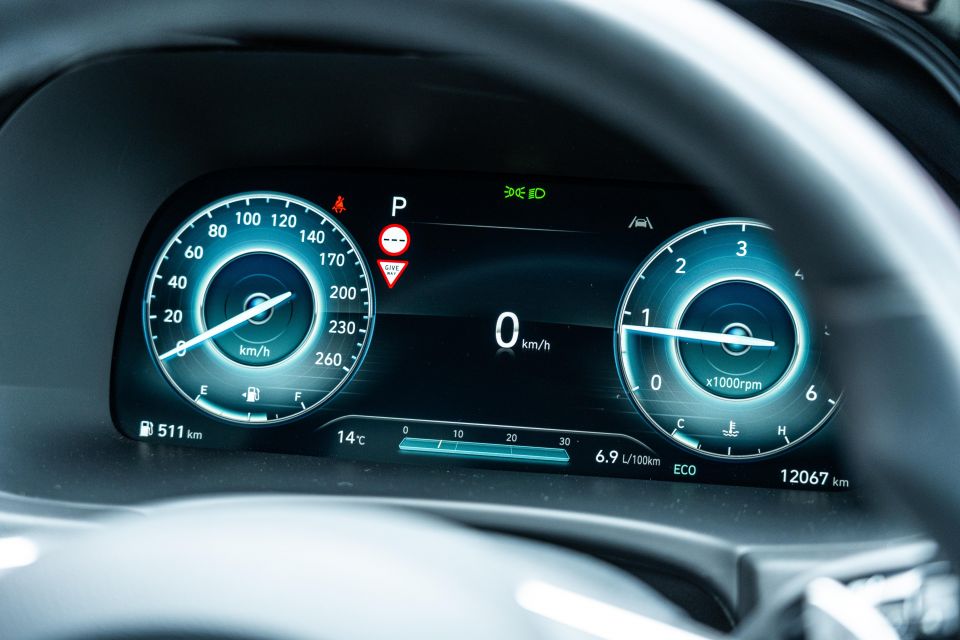
The seats, for instance, aren’t upholstered in leather like in other luxury cars, and are instead suede with leather accents. This is a nice touch as they’re much more inviting to sit in on those cold winter mornings, especially with the seat heating enabled.
Above there’s an all-black headliner, which is entirely finished in suede. That gives it a nice, soft appearance, and makes the cabin feel cozy despite its generous proportions.
That soft headliner is home to the dual sunroof unique to the Palisade’s Calligraphy variants, which is a nice bonus even if it isn’t a full panoramic setup.
There is still leather scattered around, notably on the steering wheel, dash, and armrests. Given these are some of your main touch points, it’s nice they’ve been finished in a durable material that is still pleasant to interact with.
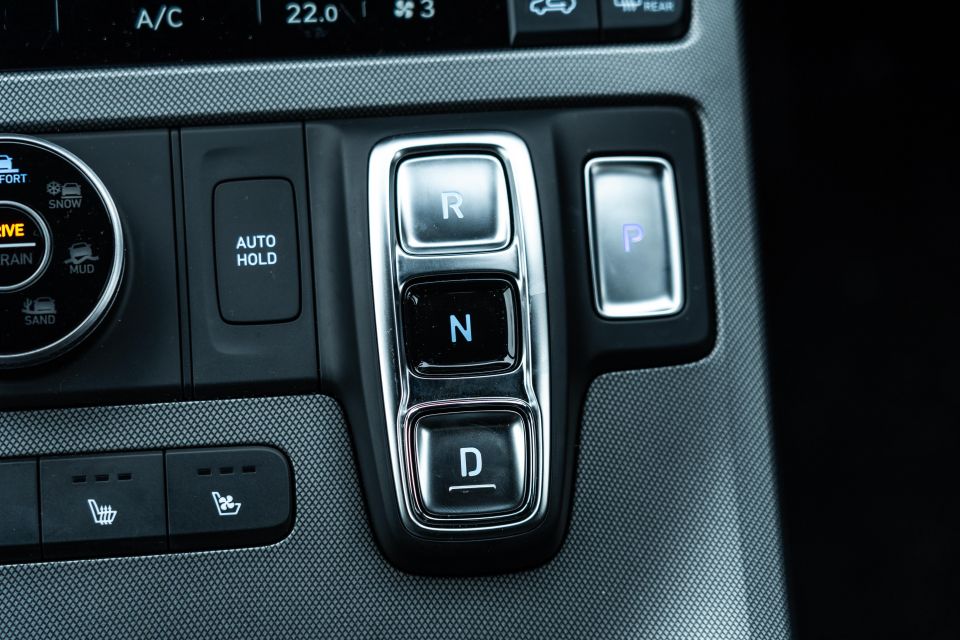
The silver centre console is where you’ll find the drive mode and climate controls. Starting with the drive selector situation – expect to take a second to adjust if you’re coming from an older automatic.
There are four buttons in place of a traditional gear selector or dial, which does simplify the process but is a bit uncommon. You also won’t find a lever or button for the parking brake, but not to worry; it’s automatically activated when you put the Palisade in park.
Adjusting the drive mode is done via a central dial, which is punctuated by clear and legible icons to best match the type of driving you’re doing. Messing with the dial will also bring up a menu on the instrument display ahead of the steering wheel.
Flanking the drive mode selector are four buttons for auto-hold, hill descent control, and parking cameras, with a selection of buttons underneath for seat heating and ventilation.
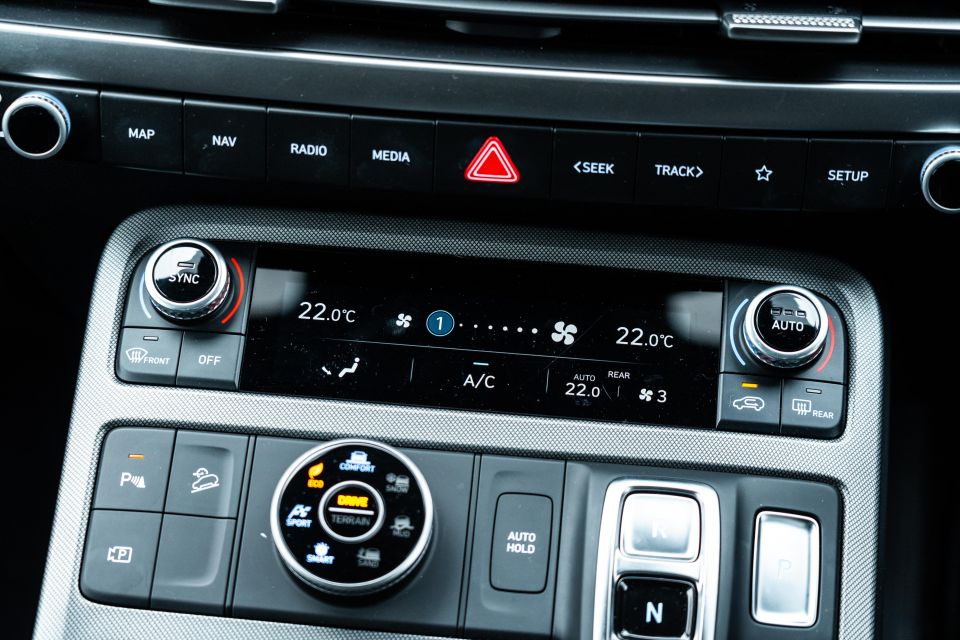
There’s also a button for the heated steering wheel, which functions a bit too well. It works quickly to heat up the wheel, but it can end up getting too hot to the point where the car has to intervene and turn it off by itself – certainly a bonus if you have extra cold hands.
The climate control system is somewhat unique. It’s a mix of knobs, buttons, and a touchscreen, which all work together to provide an interface that’s easier to operate than you might expect.
It’s a dual-zone system up front, with sync and temperature control by the two knobs. Below are the standard window demisters, and a convenient button to switch the whole system off if needed.
Every other function is controlled by the small touchscreen. Normally touchscreen climate controls are a hindrance, but I was surprised by how easy the Palisade’s system was to use.
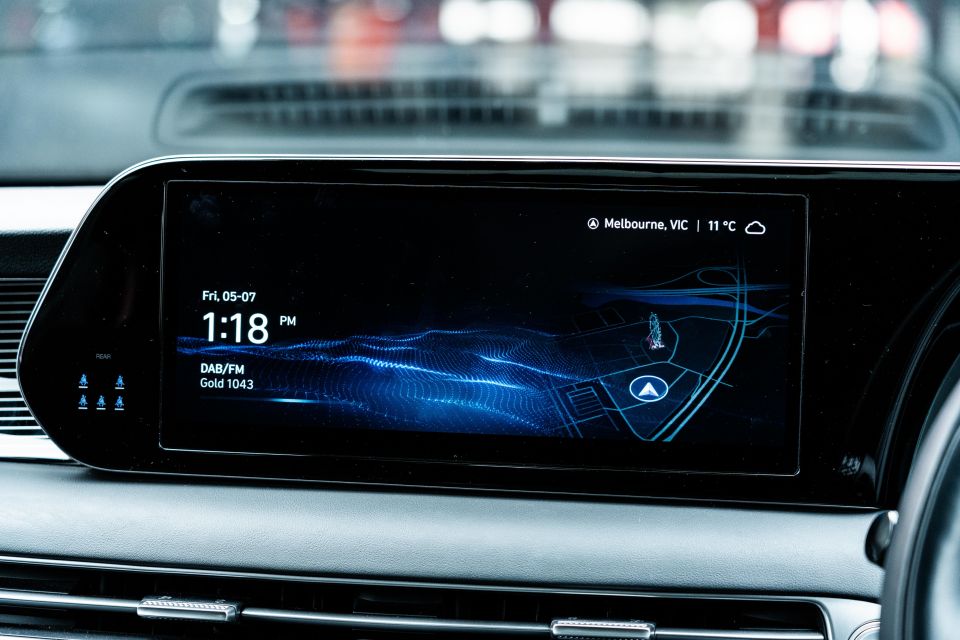
There are large, clearly marked icons for the air direction, fan speed, temperature, and even the rear climate system, which fall to hand nicely when you’re driving. It’s also graphically crisp and responds quickly and consistently to inputs, meaning it isn’t as frustrating what some other cars offer.
Above that is an array of buttons, which are linked to the touchscreen infotainment system on top. Generally speaking it’s a solid unit, with pleasant native graphics and intuitive controls to navigate the various menus (which is something you’ll want to do – more on that later).
If you can’t figure out the screen itself, the large, clearly marked buttons make it so you can hop between the different screens whenever you need to. Additionally, there are two discreet knobs for volume and tuning.
One downside to this infotainment system is the lack of wireless Apple CarPlay. It surprised me at first, because in a car like this you’d expect something like that to be included.
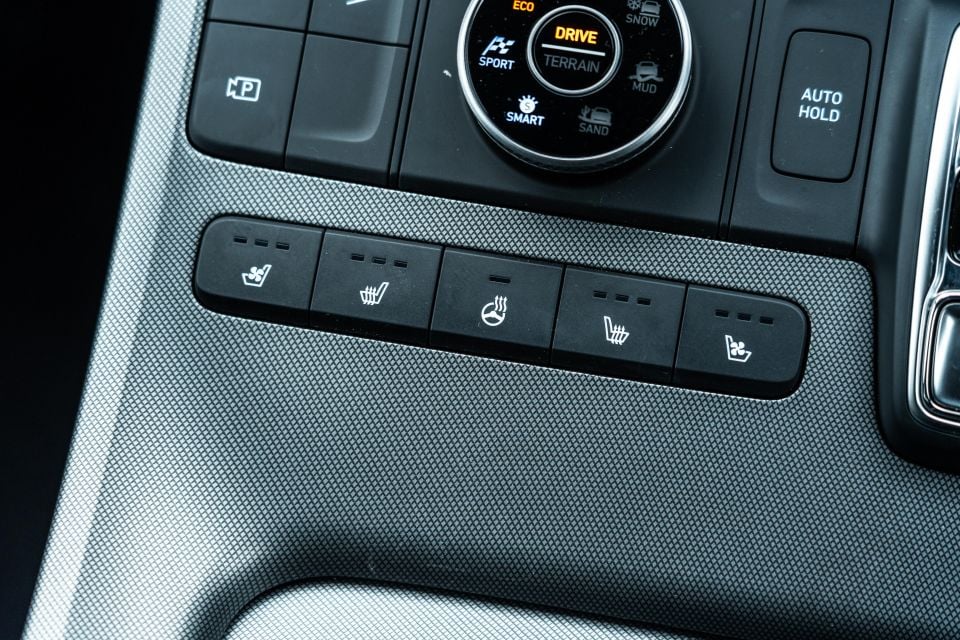
Alas, you’re limited to carrying around your lightning-to-USB-C cable if you want to hook up your phone. It’s not a big deal if this is the only car you drive, as you can leave that neatly hidden in the shallow cubby underneath the centre console’s sliding cover.
At least there’s loads of storage all round. There’s a large centre console box, glovebox, and cupholders in the doors and third-row armrests. There’s also a huge storage tray underneath the centre console for loose items.
Ahead of the driver is the 12.3-inch digital instrument cluster, which is graphically simple but matches the style of the rest of the cabin. In its standard arrangement you get two gauges, with a choice of central displays.
The graphics are crisp, and its colour scheme changes depending on the selected drive mode. It matches the rest of the interior best in Eco mode, which gives you a teal colour that complements the silver seen elsewhere.
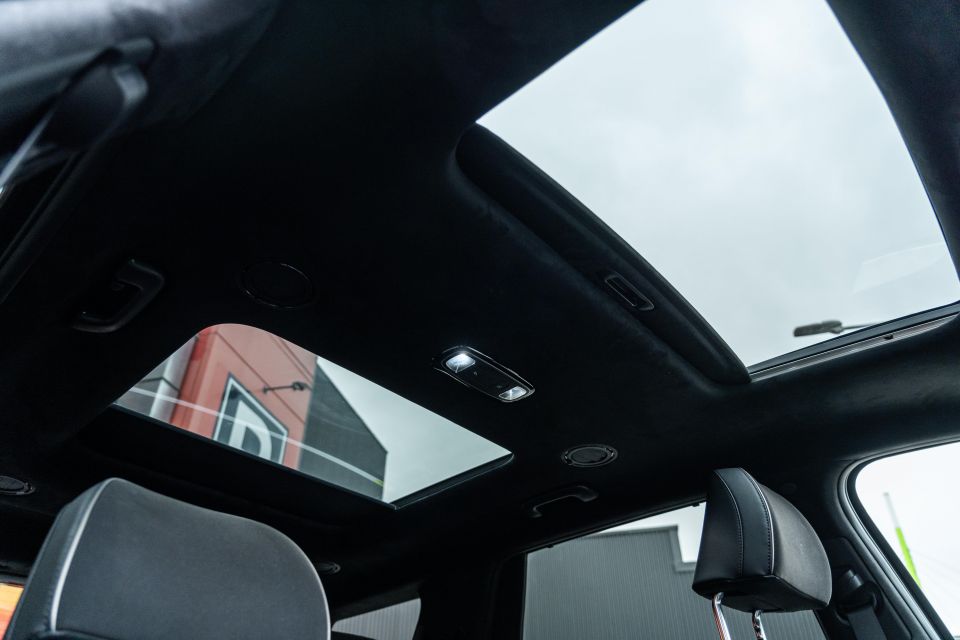
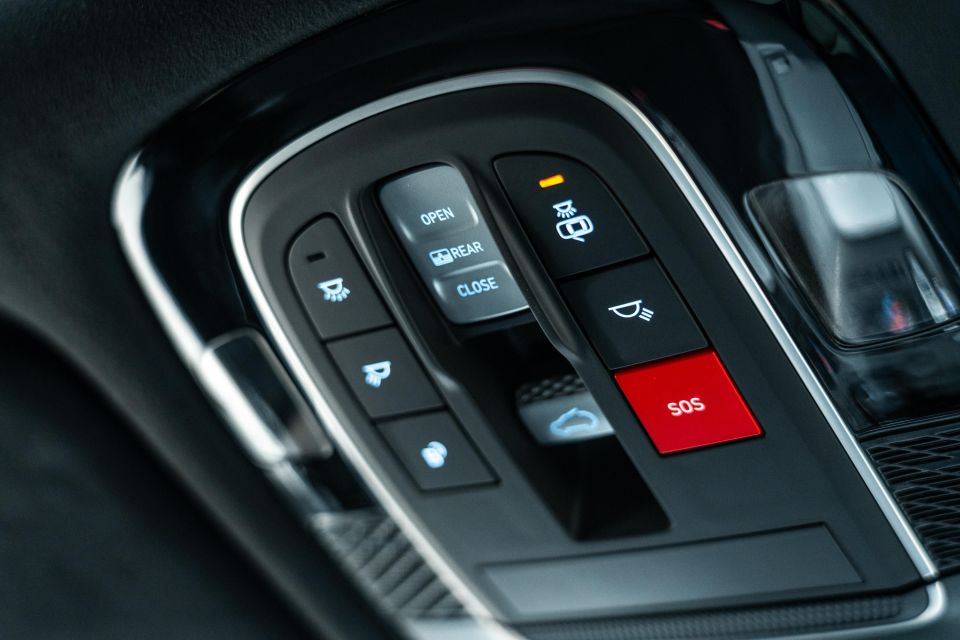
Behind the wheel are also the standard stalks for lights and wipers, which are gloss black with geometric bumps on each end for added grip. You also get paddle shifters, which are a nice addition when you’re in Sport mode.
Unlike what we’ve seen in other Hyundai and Kia products, the instrument cluster and infotainment display don’t share a panel. The separation is a good thing, because having a cluster with a more traditional shape just makes it feel a tad more classy.
Topping it all off is a gloss black bezel, which is mostly out of the way of grubby fingers. It’d almost make the infotainment screen look borderless too, if it wasn’t for the small panel gap around its display.
The second row of the Palisade is almost as nice as the front, which means it’s comfortable and well-appointed for long distance trips. Getting in is easy too, as the rear doors are large, open wide, and reveal a large opening with a high roof to climb up and into the car.
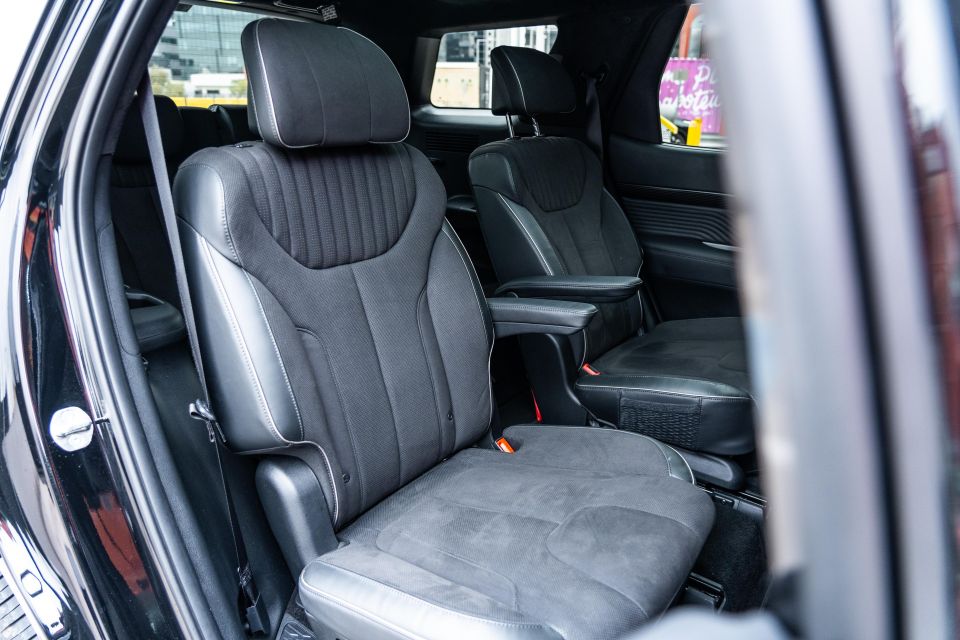
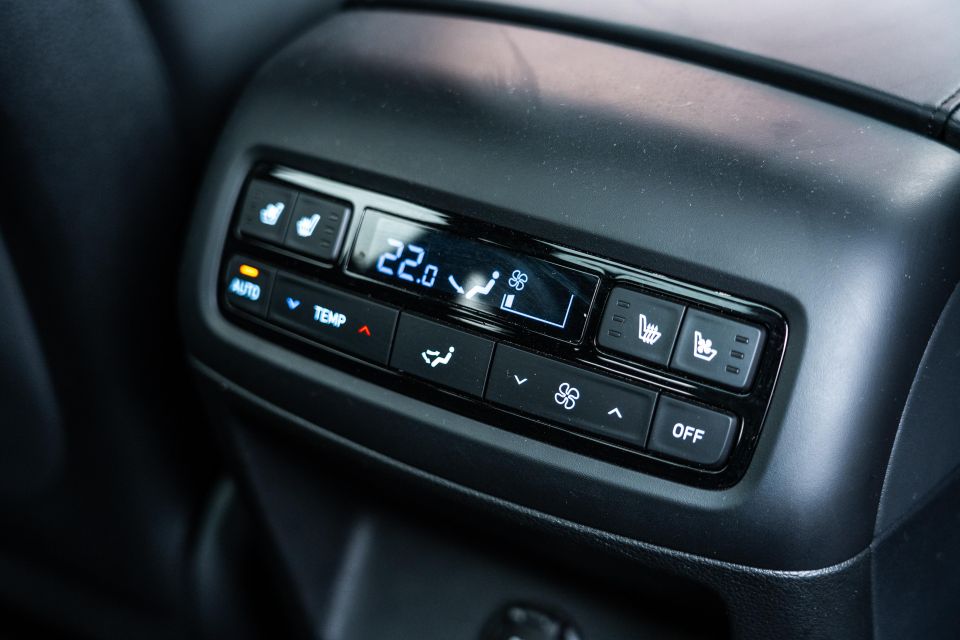
Our tester was a seven seater, which means the second row gets individual captain chairs rather than a bench. That means there are echoes of the front back here, even if the steering wheel is swapped out for armrests on each chair.
Additionally, there’s a climate control interface on the back of the centre console. It also offers a screen and buttons, and while it’s not a touchscreen it’s still easy to use – more of a simplified version of what you’ll find up front.
A nice bonus is heating and ventilation for both rear seats. If you need to charge up, you’ll find a 12-volt outlet below the rear climate control system and USB-C outlets on both front seatbacks.
Other charging options in the car include two more USB-C outlets in the third row, while the front includes a wireless phone charger, 12V plug, and some more USB ports.
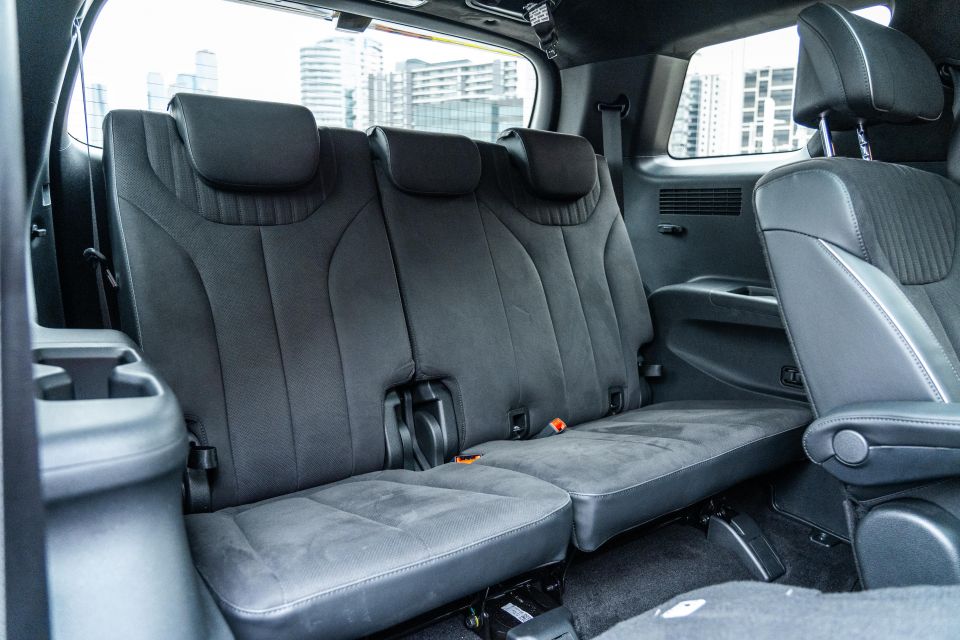
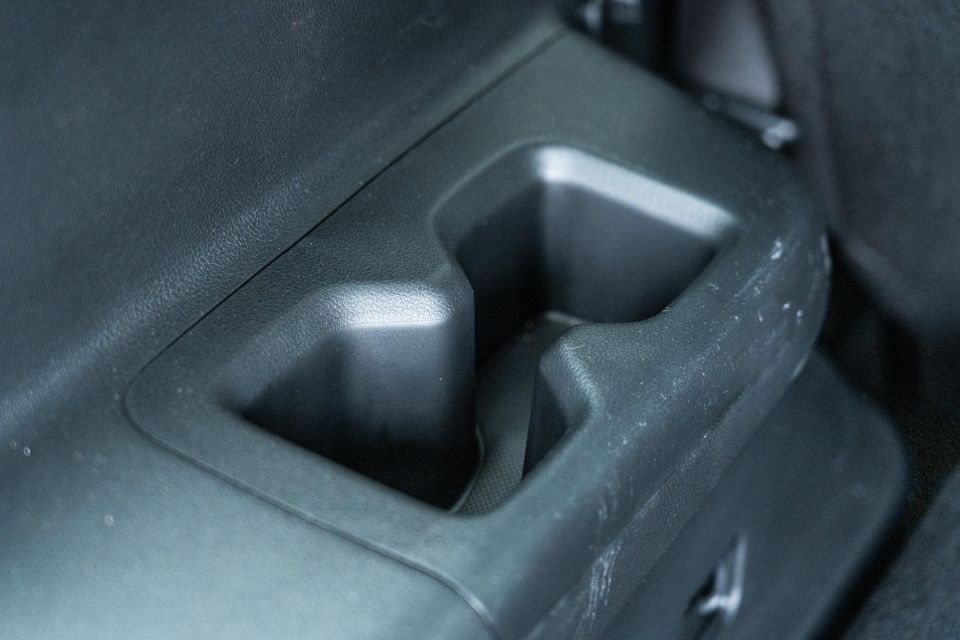
The boot of the Palisade is more than enough to get you by. Not only is there loads of space with four seats up, you still get a respectable cargo capacity if you’re utilising the full array of seating.
Hyundai doesn’t quote a full boot capacity with both rear rows folded, but you would have no trouble fitting anything you’d need in day to day use even when it’s not in its most spacious configuration. When not in use, the third row folds away neatly to give you a flat load floor.
The loading height is tall, but that’s to be expected of an SUV like the Palisade. There’s no lip at the back either, which means you’ll be able to slide cargo up and in to the wide, flat loading area without having to lean into the boot.
You even get a full-size spare wheel, mounted underneath the rear of the car. That makes the Palisade a solid option for high-capacity road trips.
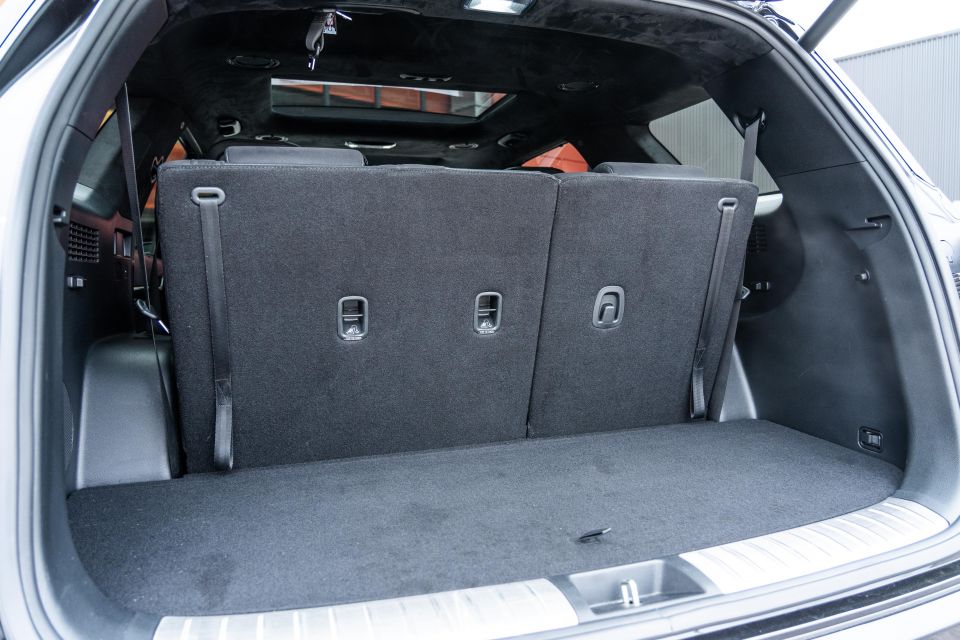
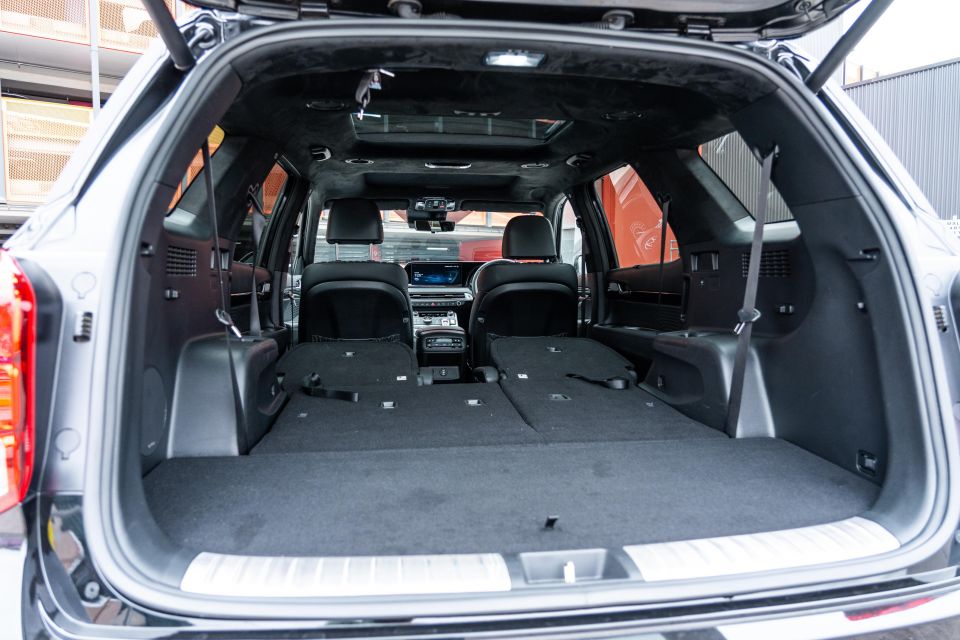
| Dimensions | Hyundai Palisade |
|---|---|
| Length | 4995mm |
| Width | 1975mm |
| Height | 1750mm |
| Wheelbase | 2900mm |
| Boot capacity (VDA) | 311L (3rd row up) 704L (2nd row up) |
To see how the Hyundai Palisade lines up against the competition, check out our comparison tool.
There are two powertrains available across the Palisade range – a 3.8-litre naturally aspirated petrol V6 and a 2.2-litre four-cylinder turbo-diesel. Our tester was fitted with the latter.
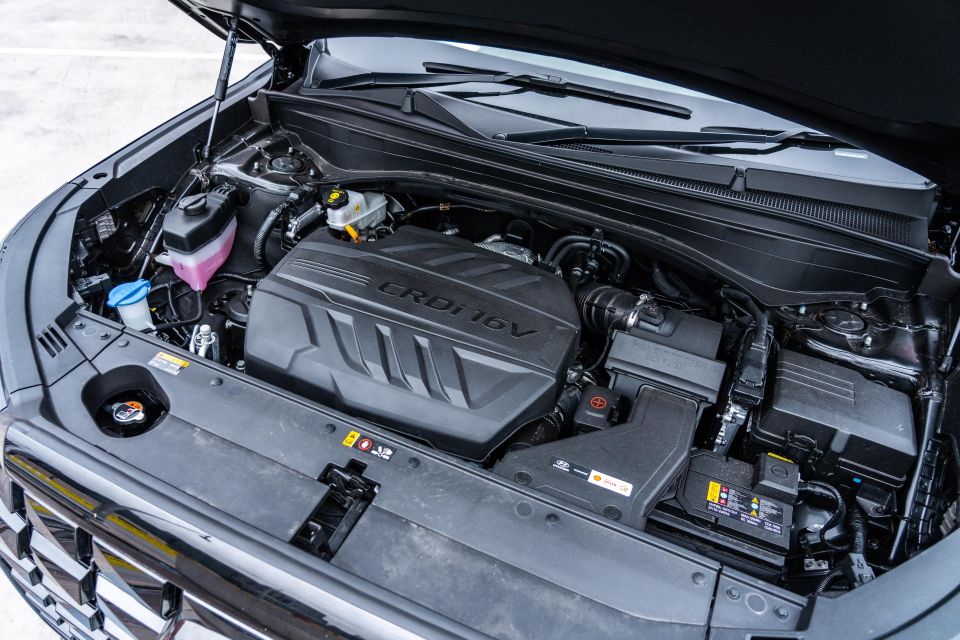
Where expert car reviews meet expert car buying – CarExpert gives you trusted advice, personalised service and real savings on your next new car.
Both powertrains are mated to an eight-speed automatic transmission, though you’ll only get an all-wheel drive setup with the diesel engine. Opting for a petrol V6 means FWD-only.
| Model | Hyundai Palisade 2.2D AWD |
|---|---|
| Engine | 2.2-litre 4cyl turbo-diesel |
| Power | 147kW @ 3800rpm |
| Torque | 440Nm @ 1750rpm-2750rpm |
| Transmission | 8-speed automatic |
| Driven wheels | All-wheel drive |
| Weight | 2070kg (kerb) |
| Gross Vehicle Mass (GVM) | 2755kg |
| Towing capacity | 2200kg (braked) |
| Fuel economy (claim) | 7.3L/100km |
| Fuel economy (as tested) | 7.0L/100km |
| Fuel tank size | 71 litres |
| Fuel requirement | Diesel |
To see how the Hyundai Palisade lines up against the competition, check out our comparison tool.
The Palisade backs up its bodyguard transporter façade with a solid on-road experience, though it isn’t perfect.
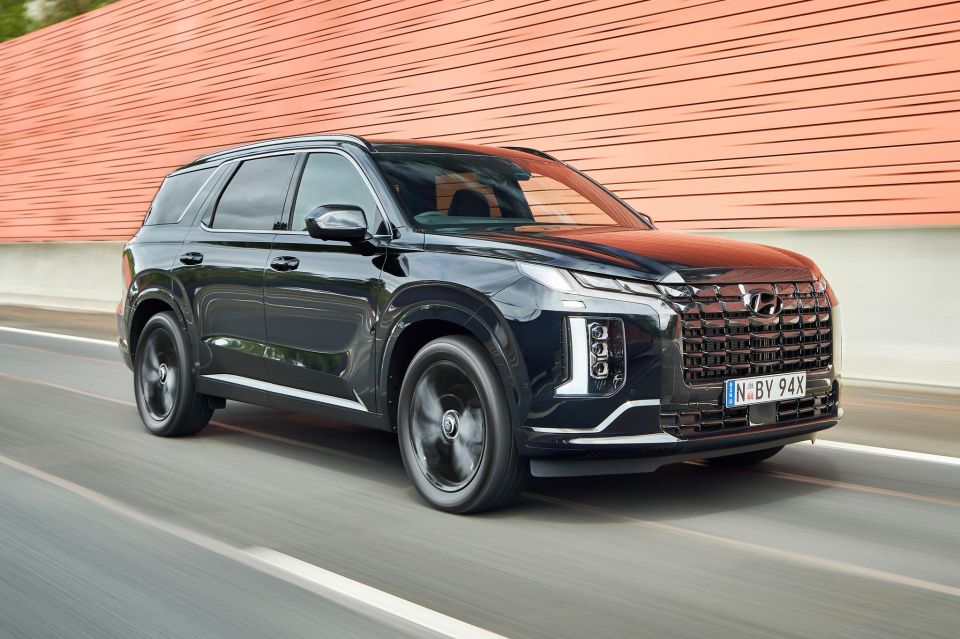
Stepping in almost feels like getting behind the wheel of a toned-down military vehicle, and the amount of metal around you makes it easy get comfortable in your own space on the road.
Firing up the diesel engine is done by pressing the button to the left of the wheel, but its idle is refined. You’d know it was a diesel if you were told or had a trained ear, but to the average commuter it won’t sound too different to any of the other cars you see everyday.
Getting comfortable is easy on account of the powered seat adjustment up front. The suede material is also nice to sit on, and even the steering wheel is easy to get into place even if it only features manual adjustment.
Once you press that drive button on the centre console, you’re good to go. Manoeuvring out of a parking space is easy thanks to the Palisade’s large steering wheel, and while it doesn’t have incredibly light steering it’s still nice and nimble when it needs to be.
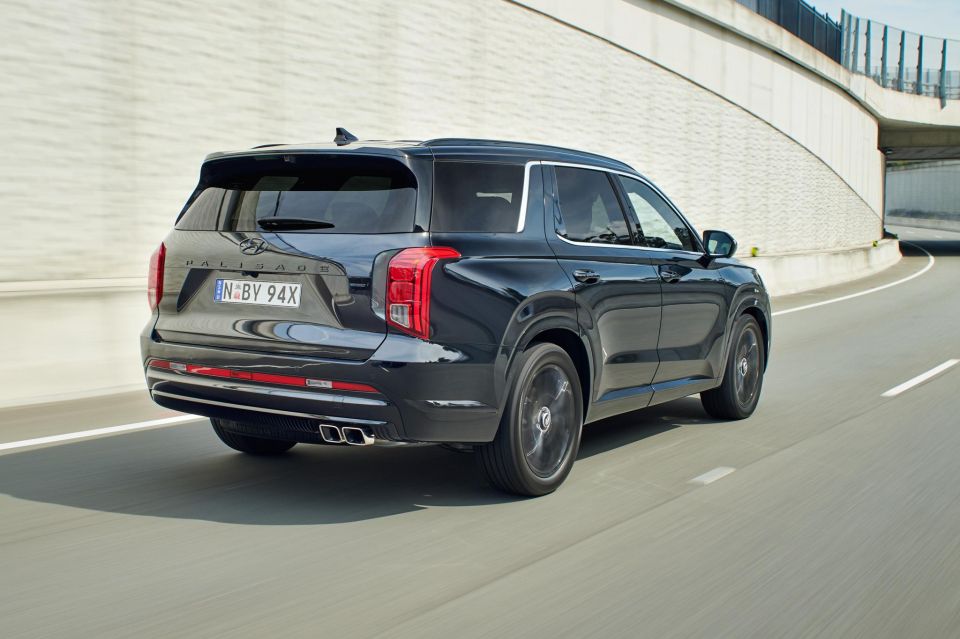
Joining the open road reveals a responsive accelerator connected to a beefy motor. It’s a big car, but the engine does well to get it moving with no fuss.
The automatic transmission it’s mated to is also a quality unit, and it rarely stumbles or gets caught out in the wrong gear. It being an eight-speed gearbox also means there’s plenty of range for all sorts of different speeds, which gives it solid acceleration from a standstill and a comfortably low rev count when cruising on the highway.
Our week with the Palisade had a heavy skew towards highway driving, which with the well-tuned gearbox allowed us to achieve a more economical fuel consumption figure than what Hyundai says the car can do. When fuel prices are as high as they are, it’s refreshing to see such a large car be that frugal.
As with other Palisades, our tester was fitted with paddle shifters for when you want to take matters into your own hands. Pairing them with Sport mode makes driving the Palisade a bit more fun, even if it is mostly just playing pretend.
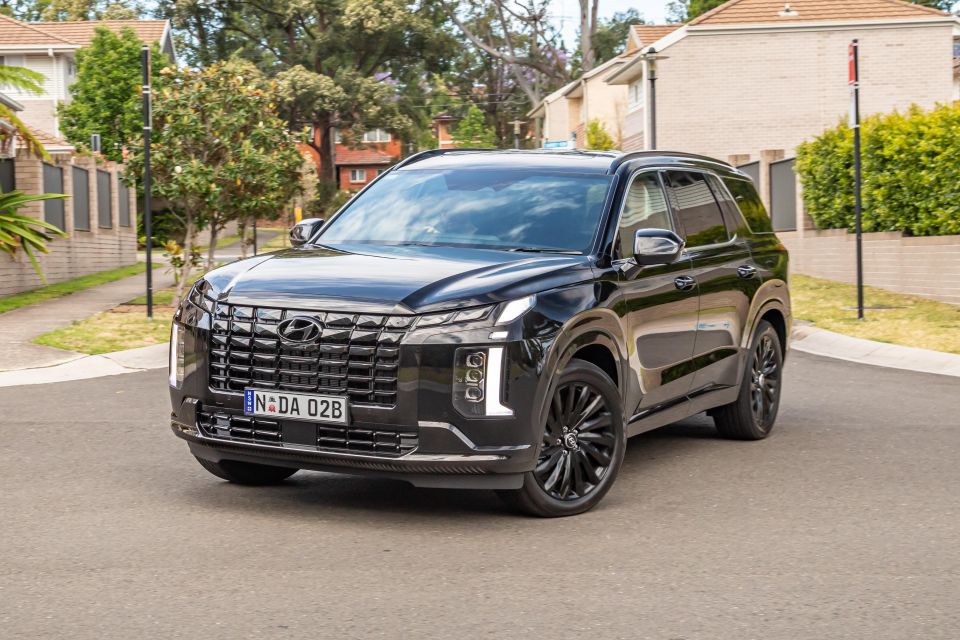
To my surprise the brakes on the Palisade are also potent, which means it pulls up quickly every time. To reiterate – the Palisade is big, so it’s comforting to know you have the necessary stopping power under your foot.
Visibility out of the Palisade is also very good, thanks to its high, large windows and generous mirrors. There is blind-spot monitoring to help place yourself on the road, and if you start drifting out of your lane there are systems in place to warn you and set you straight if need be.
The only issue is that the lane keep assist is a tad overreactive, as it sometimes seems like it throws up a warning or makes a sound just to remind you that it is, in fact, installed.
The headlining feature on the Calligraphy Black Ink is its blacked-out exterior, which extends to its grille, badges, and wheels. It’s hard to not feel like you’re someone important when you’re driving around because of how imposing it looks on the outside.
As a driver you also sit quite high, which means you’re physically above most other people on the road. All of that makes it a confidence-inspiring experience, even if you’re used to smaller cars.
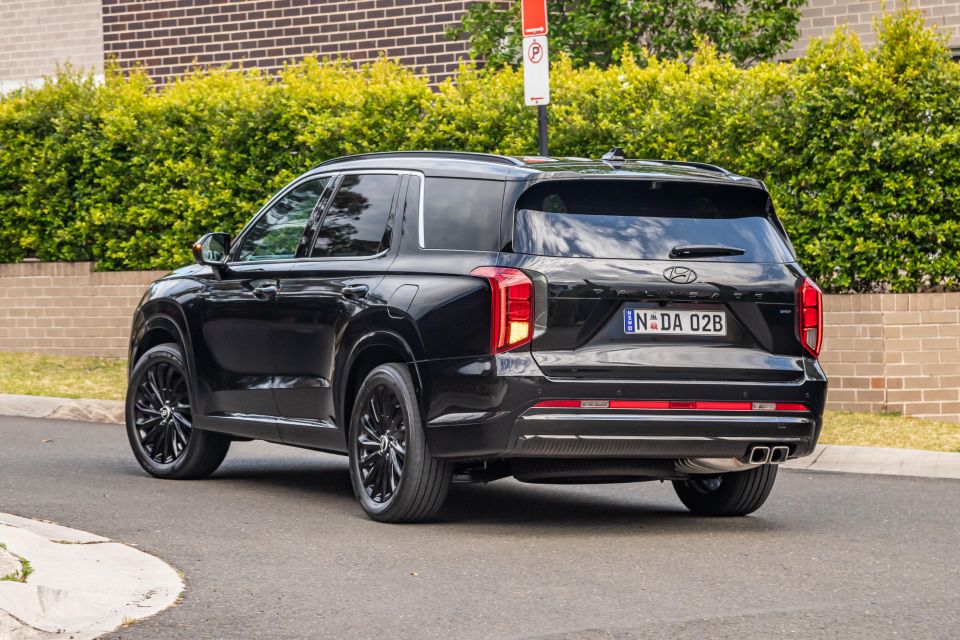
On that front, it’s hard to imagine anyone having a difficult time getting themselves set up and used to driving the Palisade. Everything is as it should be, and if you’ve been in other modern Hyundai or Kia cars it’s all very familiar.
While that’s good for the ergonomics and driving experience, it’s bad news for the driver assist functions.
As is known with Hyundai cars, the speed limit warning and assist system is incredibly obnoxious. It’ll beep at you if you’re over the limit at all, and while you can turn off the warning sound through the infotainment screen, it’s never fully off.
Thankfully, Hyundai is taking a step towards improving that function by allowing drivers to turn it off in the facelifted version of its smaller Tucson SUV.
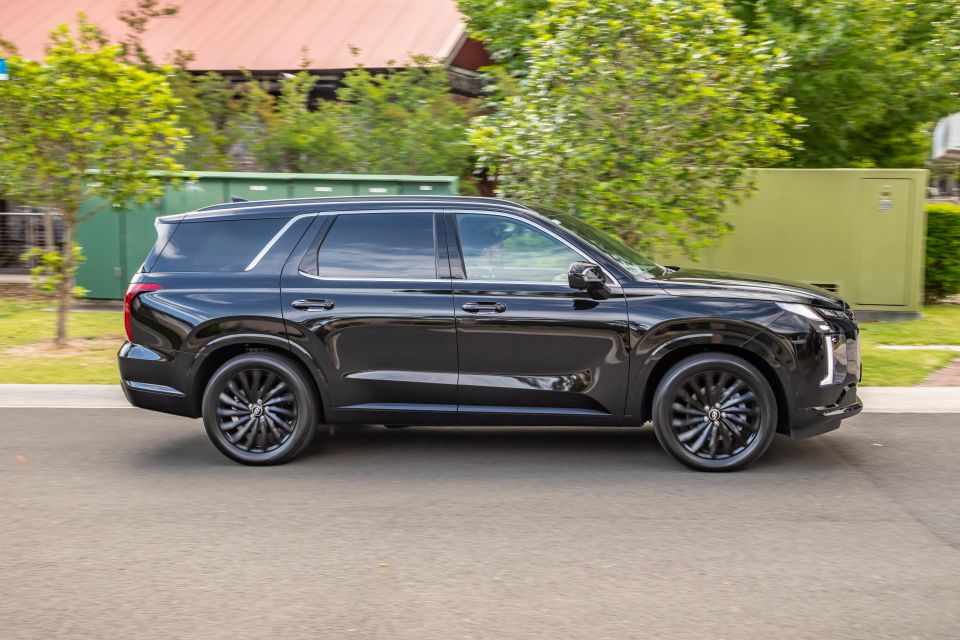
There’s an argument to be made about not speeding in general, but there are times when you need to go a kilometre or two over the posted limit – like to keep up with the flow of traffic.
If you’re travelling more than 10km/h over the limit, the car will beep at you relentlessly until you slow back down. Normally you wouldn’t be going that fast, but there’s also an issue with the car’s in-built speed limit detection.
On multiple occasions the Palisade drastically misjudged the posted speed limit. On certain sections of the Hume Freeway that are always 110km/h, it thought the speed limit was 100km/h. Connect the dots to figure out why that might be a problem.
It goes both ways too, as some 80km/h sections of highway closer to Melbourne were wrongly interpreted as 100km/h. The fact you can at least dumb down the speed limit warnings is good thing, but given some other cars can correctly recognise speed limits all the time I’d want it to be better in Hyundai cars than it is here.
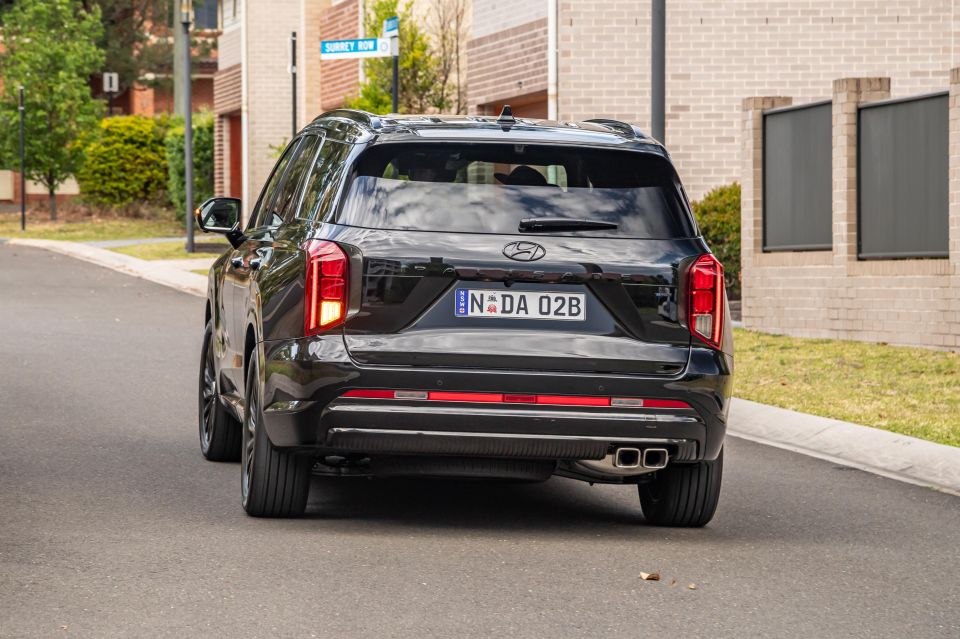
At least there’s a light at the end of the tunnel.
All that aside, it is still a solid driving experience. It’s just disappointing it’s somewhat undermined by annoying tech that is there no matter what you do.
Alongside the refined drivetrain, steering, and brakes, the Palisade allows minimal road and wind noise to breach the cabin. It handles adverse weather with no issues as well, and it shrugs off gusts of wind with the ease you’d expect from a car that weighs two tonnes.
With the speed limit and lane keep assist systems better calibrated, this would be a very impressive package on the road. As it stands, it’s still good albeit a bit disappointing.
The Palisade is sold in two distinct variants, though there are some differences when you look between the lines.

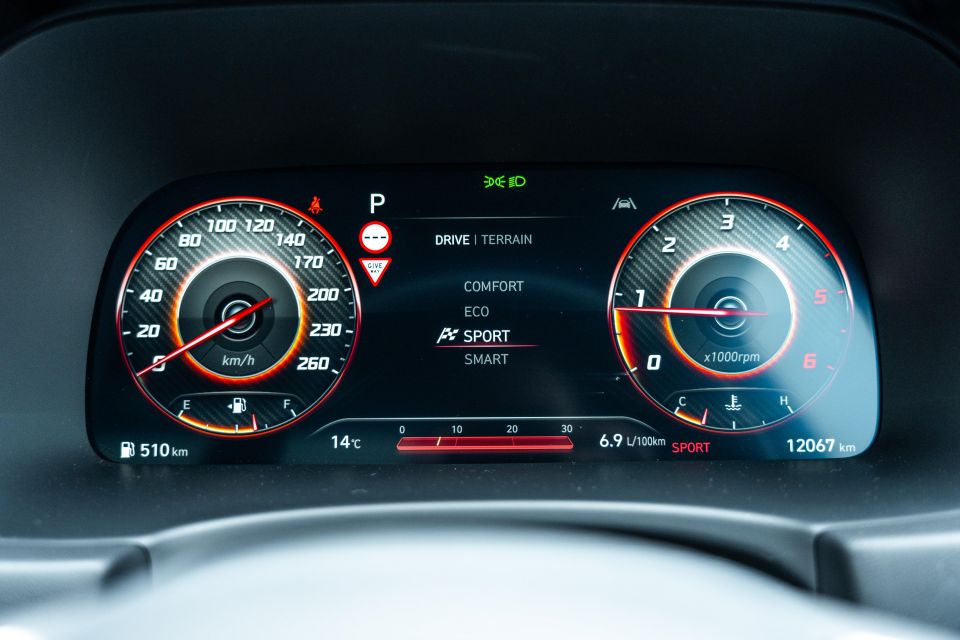
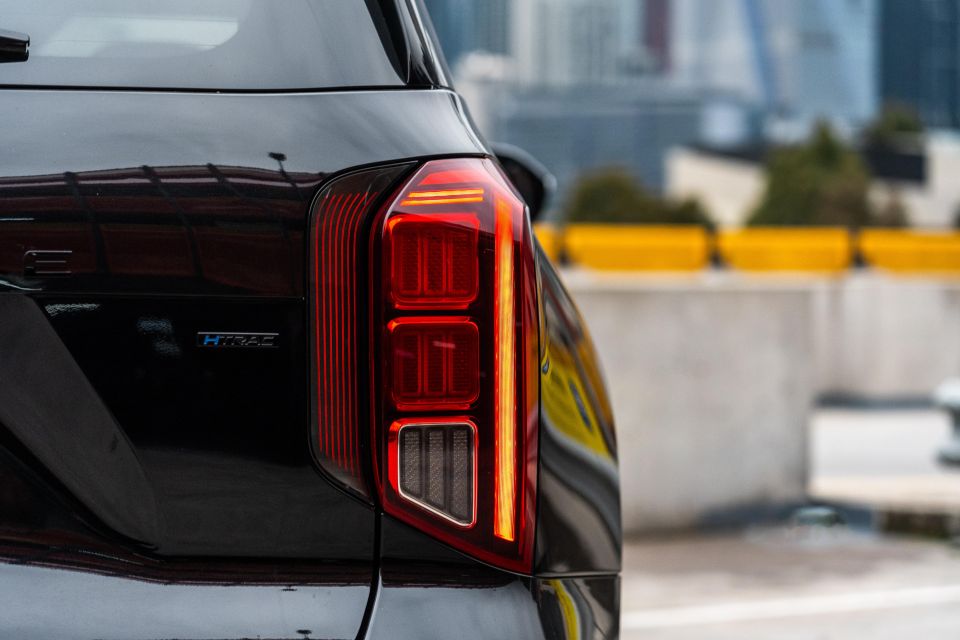

Palisade Elite standard equipment:
Palisade Calligraphy adds:
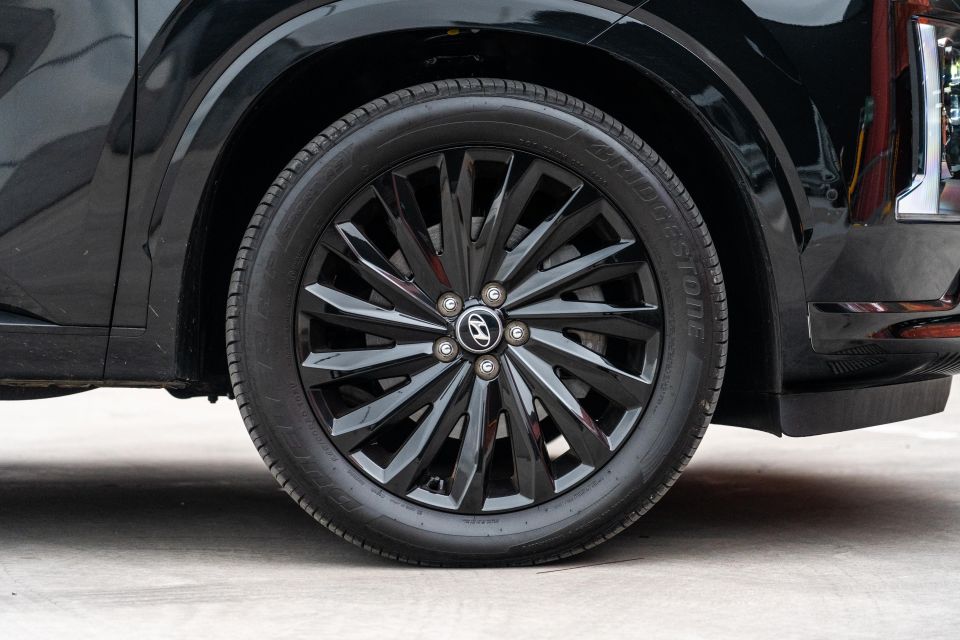

Palisade Calligraphy Black Ink adds:
The 2024 Hyundai Palisade wears a five-year ANCAP safety rating following a re-evaluation of the mid-life updated SUV in 2022.
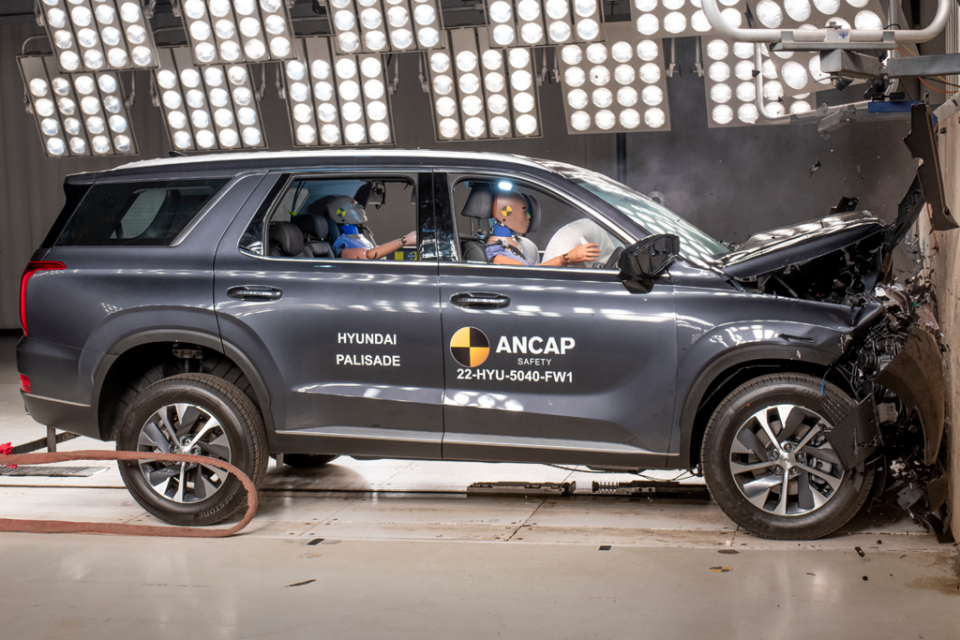
| Assessment | ANCAP score |
|---|---|
| Adult occupant protection | 32.21 out of 38 (84 per cent) |
| Child occupant protection | 43.24 out of 49 (88 per cent) |
| Vulnerable road user protection | 33.75 out of 54 (62 per cent) |
| Safety assist | 13.41 out of 16 (83 per cent) |
Standard safety features include:
Palisade Calligraphy adds:
The 2024 Hyundai Palisade is covered by a five-year, unlimited-kilometre warranty.
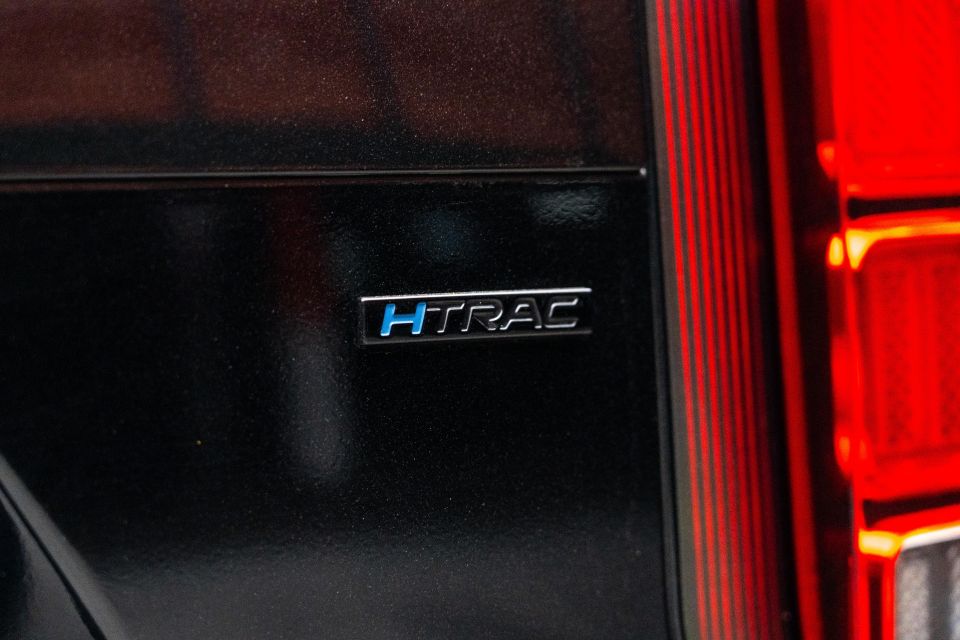
| Running costs | Hyundai Palisade 2.2D AWD |
|---|---|
| Warranty | 5 years, unlimited kilometres |
| Roadside assistance | Lifetime (service activated) |
| Service intervals | 12 months or 15,000 kilometres |
| Capped price servicing | Up to 5 years or 75,000 kilometres |
| Total capped price service cost | $2515 |
The Palisade is a properly nice car, but it’s let down by annoying driver assist tech.
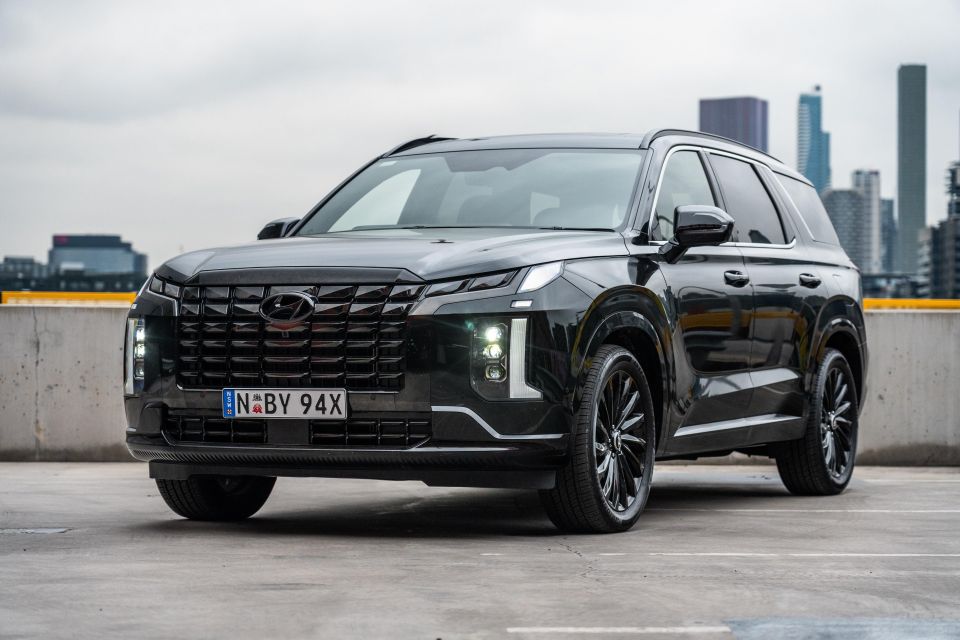
Its interior is luxuriously appointed and well-laid out, which means it’s both comfortable and pleasing to the eye. That glossy pinstripe and quilted leather combo on the dashboard and door cards is a highlight here.
The outside is mean and stealthy thanks to the gloss black trim. Sure, it might be hard to keep clean, but its consistency across the whole car means it looks miles better than the DIY rattle can P-plater special.
It certainly looks the part, and when you’re driving around town or in the city it does everything you’d expect it to.
Only when you hit the open road does the disappointment settle in – its arrival signalled by the beeps and bongs of the driver assist systems.
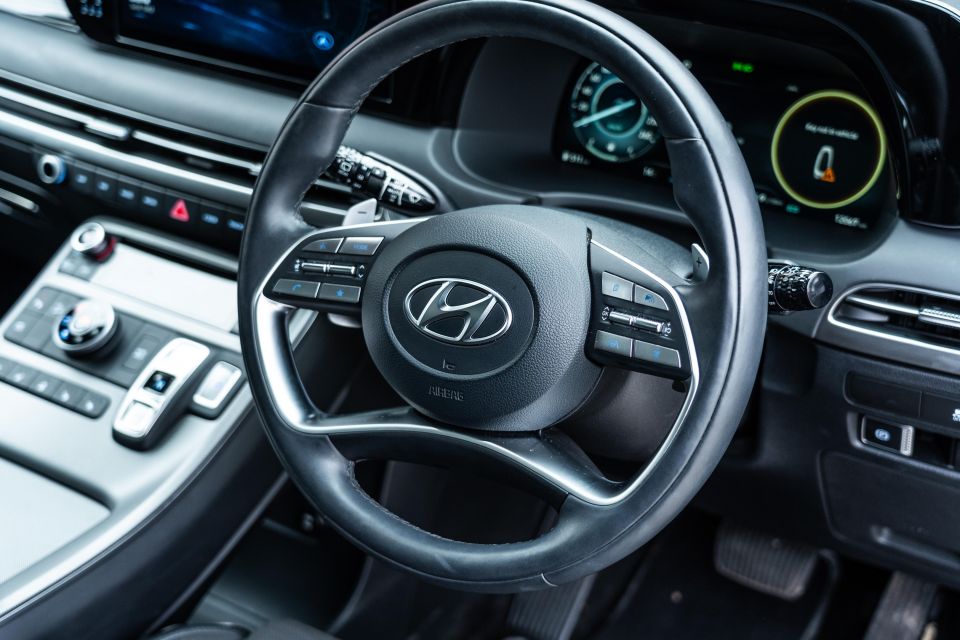
While the lane-keep assist isn’t perfect, it’s the speed limit warning that sours the experience big time. If there was a way to completely turn it off, regardless of whether there’s a dedicated button or a trawl through the touchscreen menus, it’d be much better than it is.
The way it is, it’s just not an enjoyable experience on the highway. It’s good Hyundai is fixing that on its upcoming models, and hopefully the Palisade will see that sometime soon too.
That aside, this Palisade is still a great choice for a family hauler. It commands a high price tag, but its diesel engine is arguably the better of the two available, and you can’t really go wrong with all-wheel drive.
The cheaper versions will get you by just fine, but if cosmetics are your thing it’s hard to look past the Black Ink.
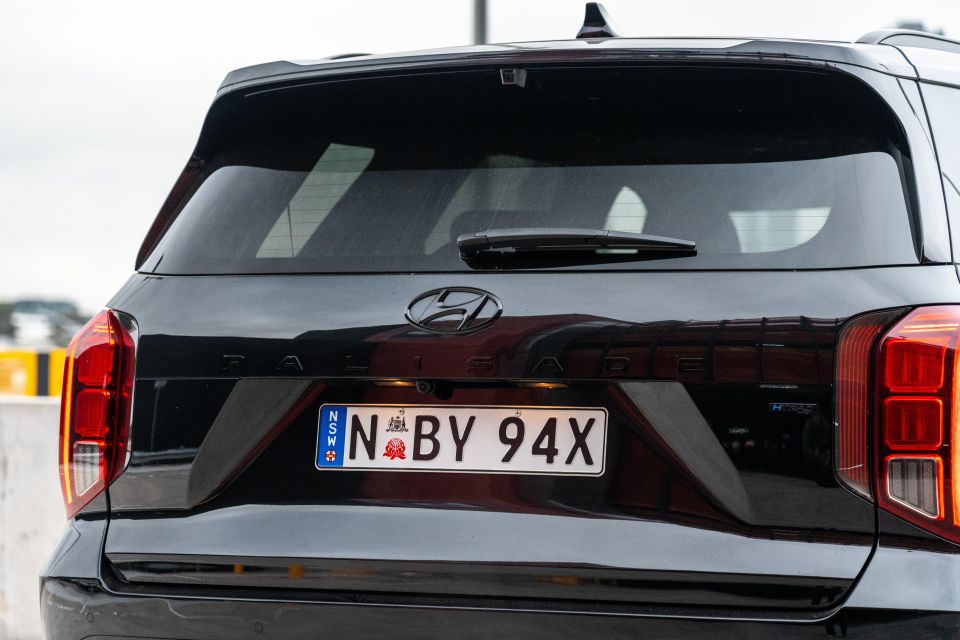
Click on the images for the full gallery
MORE: Buy a Hyundai Palisade MORE: Everything Hyundai Palisade
Where expert car reviews meet expert car buying – CarExpert gives you trusted advice, personalised service and real savings on your next new car.
Max Davies is a CarExpert journalist with a background in regional media, with a passion for Japanese brands and motorsport.


Damion Smy
14 Hours Ago
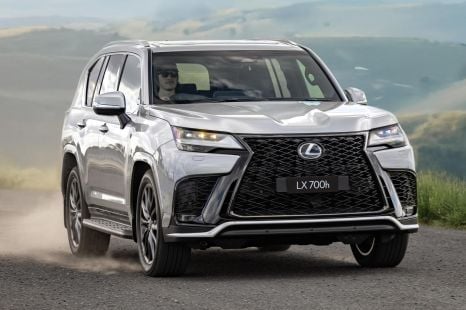

Derek Fung
18 Hours Ago
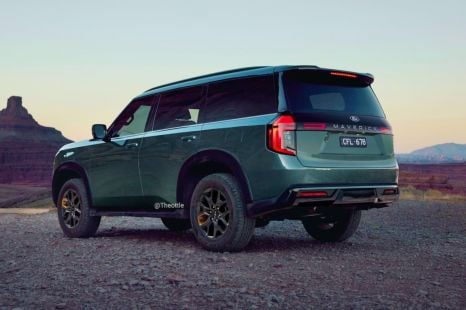

Ben Zachariah
4 Days Ago
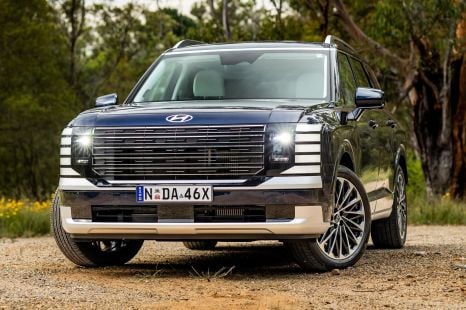

Matt Campbell
7 Days Ago
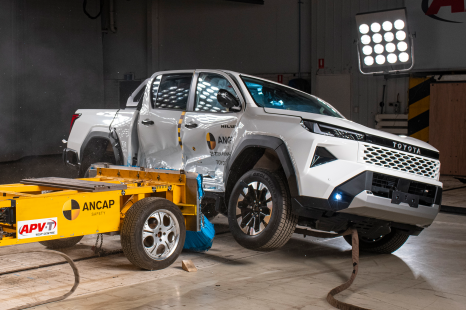

William Stopford
13 Days Ago
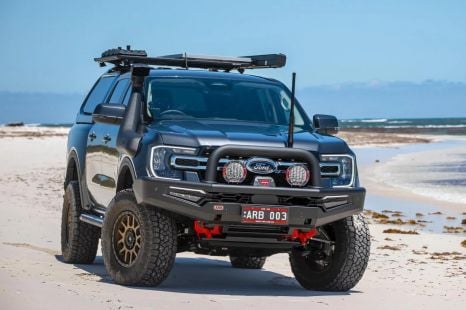

William Stopford
13 Days Ago